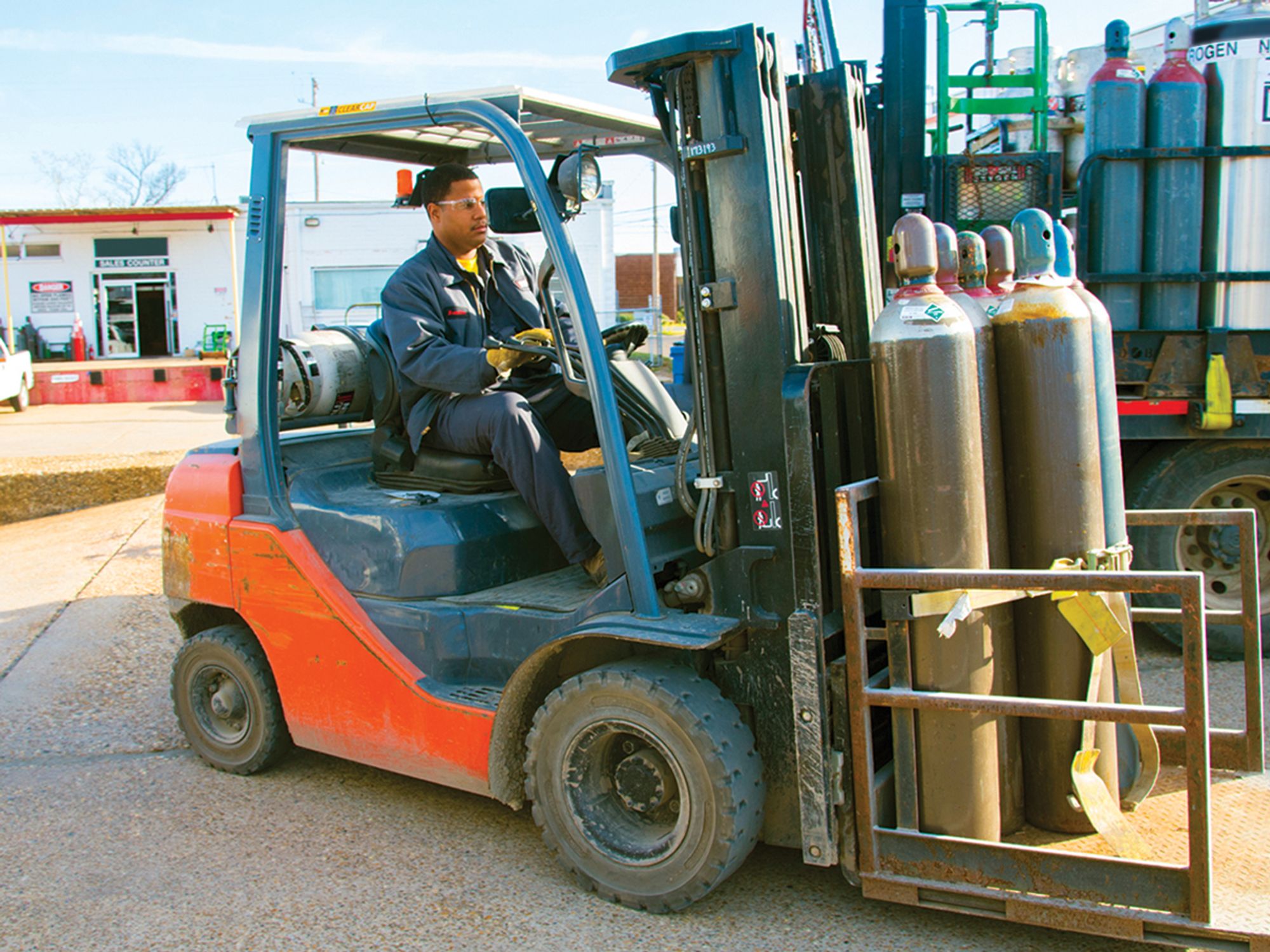Oxygen and acetylene

- Because of combustion hazards associated with oxygen, bulk oxygen systems must be carefully located, operated, and maintained to be safe.
- Acetylene poses a flammability hazard and must be used, transported, and stored properly for safety.
- Regulatory information for oxygen and acetylene can be found under 29 CFR 1910.
Oxygen
With the presence of oxygen, there is the hazard of combustion. Systems must be located in such a way that they are not near combustible or flammable material. The components of the systems must be constructed to operate safely for the intended application, complete with safety devices. A warning sign to indicate that no smoking or open flames are allowed must be permanently posted.
A bulk oxygen system is an assembly of equipment, such as oxygen storage containers, pressure regulators, safety devices, vaporizers, manifolds, and interconnecting piping which has storage capacity of:
- More than 13,000 cubic feet of oxygen connected in service or ready for service, or
- More than 25,000 cubic feet of oxygen, including unconnected reserves on hand. These quantities are maintained at normal temperature and pressure (NTP).
Where do the regulations apply?
The Occupational Safety and Health Administration’s (OSHA’s) regulatory information for oxygen can be found under 29 CFR 1910.104. This section applies to the installation of bulk oxygen systems on industrial and institutional consumer premises. This section does not apply to oxygen manufacturing plants or other establishments operated by the oxygen supplier or its agent for the purpose of storing oxygen and refilling portable containers, trailers, mobile supply trucks, or tank cars, nor to systems having capacities less than those stated in 1910.104(b)(1).
What is required in the workplace?
Employers with bulk oxygen systems must ensure the systems are located in an appropriate area. Bulk oxygen storage systems shall be located above ground outdoors, or shall be installed in a building of noncombustible construction, adequately vented, and used for that purpose exclusively. The location selected shall be such that containers and associated equipment shall not be exposed by electric power lines, flammable or combustible liquid lines, or flammable gas lines.
Employers must also:
- Ensure separation of systems and exposures as outlined in 1910.104;
- Equip containers with safety relief devices; and
- Maintain equipment in safe condition.
Acetylene
Acetylene has many industrial uses, from being a raw material to use in welding. The substance poses a flammability hazard and must be used, transported, and stored properly. The OSHA requirements apply to employers who have employees who use or are exposed to acetylene. The specific requirements vary depending on the application, but regulatory information for acetylene can be found under:
What is required in the workplace?
Employers must follow the provisions of Compressed Gas Association (CGA) Pamphlet G-1-2009 for all in-plant transfer, handling, storage, and use of acetylene and must comply with Chapter 9 (“Acetylene Piping”) of NFPA 51A-2006 (“Standard for Acetylene Charging Plants”) (National Fire Protection Association, 2006 ed., 2006). Systems installed prior to Feb. 16, 2006, may comply with the provisions of Chapter 7 (“Acetylene Piping”) of NFPA 51A-2001 (“Standard for Acetylene Charging Plants”) (National Fire Protection Association, 2001 ed., 2001).
Employers must also:
- Ensure cylinder safety;
- Keep piped systems safe;
- Ensure that facilities, equipment, structures, or installations used to generate acetylene or to charge (fill) acetylene cylinders comply with the provisions of NFPA 51A-2006 (“Standard for Acetylene Charging Plants”) (National Fire Protection Association, 2006 ed., 2006), except for facilities constructed or installed prior to Feb. 16, 2006;
- Communicate hazard information through a hazard communication program; and Ensure cylinders are properly marked.
For welding applications, employers must follow the requirements in 1910.253.
